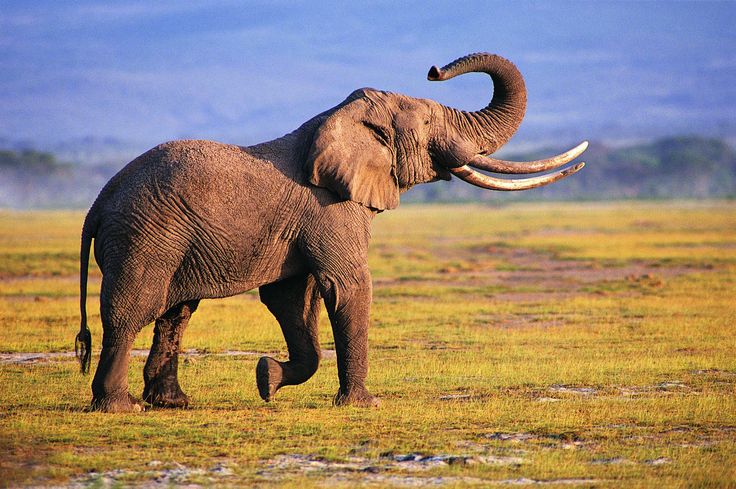Elephants are among the most fascinating and iconic animals on Earth. Known for their intelligence, strength, and complex social behavior, they play a crucial role in maintaining the health and balance of the ecosystems in which they live. There are three main species of elephants: the African savanna elephant, the African forest elephant, and the Asian elephant. Below are some of the most captivating and important facts about elephants, offering insight into their biology, behavior, and conservation. Facts About Elephants
Elephants Are the Largest Land Mammals
African savanna elephants (Loxodonta africana) are the largest land animals in the world. Adult males, also known as bulls, can weigh up to 6,000 kilograms (13,000 pounds) and stand 3 to 4 meters (10 to 13 feet) tall at the shoulder. Female elephants are smaller but still massive compared to most other terrestrial mammals. Asian elephants are slightly smaller than their African relatives but remain impressively large.
They Have Remarkable Brains and Memories
Elephants have the largest brain of any land animal, weighing around 5 kilograms (11 pounds). Their brains are highly developed, especially in areas responsible for memory, emotions, and social interaction. This gives rise to the phrase “an elephant never forgets.” Elephants can remember other elephants, people, and locations for many years, which is vital for survival in the wild.
They are also known to show empathy, mourn their dead, and cooperate in solving problems—behaviors that highlight their emotional intelligence.
Their Trunks Are Incredibly Versatile
The elephant’s trunk, a fusion of its nose and upper lip, is one of the most versatile appendages in the animal kingdom. It has over 40,000 muscles, allowing elephants to perform a wide range of tasks—from picking up a single blade of grass to tearing branches off a tree.
Elephants use their trunks for drinking, bathing, feeding, smelling, touching, and communicating. They can even use them as snorkels when swimming in deep water.
Tusks Are Actually Teeth
An elephant’s tusks are elongated incisor teeth made of ivory. Both male and female African elephants typically have tusks, while in Asian elephants, usually only the males have them.
Tusks are used for digging, stripping bark from trees, fighting, and defense. Unfortunately, their ivory also makes them targets for poaching, which has had a devastating effect on elephant populations.
Elephants Live in Matriarchal Societies
Elephant herds are matriarchal, meaning they are led by the oldest and often largest female, known as the matriarch. These herds typically consist of related females and their young, while males leave the herd when they reach adolescence and live alone or in bachelor groups.
The matriarch uses her experience and memory to lead the herd, find water and food sources, and navigate dangers. Facts About Elephants
Communication Is Sophisticated and Long-Range
Elephants communicate using vocalizations, body language, touch, and chemical signals. One of the most fascinating forms of elephant communication is infrasound, which are low-frequency sounds that can travel up to 10 kilometers (6 miles) through the ground and air.
These deep rumbles help elephants coordinate movements, warn each other of threats, and find mates, even when they are far apart. Facts About Elephants
Elephants Eat Massive Amounts of Food
Elephants are herbivores and spend up to 16 hours a day eating. An adult elephant can consume 100–300 kilograms (220–660 pounds) of food daily, including grasses, leaves, bark, fruit, and roots.
Because of their high food intake, elephants play a key role in shaping their habitats. They help to disperse seeds, open up forest canopies, and create water holes, making them ecosystem engineers.
They Need Plenty of Water
Elephants can drink up to 200 liters (52 gallons) of water per day. They not only drink it but also use water for bathing and cooling themselves. They spray water and mud on their backs to regulate body temperature and to protect their skin from parasites and sunburn.
Water availability often determines elephant movement and migration patterns, especially during dry seasons.
Elephants Can Mourn and Express Grief
Elephants are known to mourn the death of other elephants. They exhibit behaviors such as touching the bones of the deceased, standing silently near the body, and even covering the carcass with leaves or soil.
These mourning rituals suggest a deep emotional capacity, which is rarely observed in wild animals.
They Have a Long Gestation Period
Elephants have the longest pregnancy of any land mammal—about 22 months. A newborn elephant calf typically weighs around 100 kilograms (220 pounds) and is well-developed at birth, though it relies heavily on its mother for care and guidance.
Female elephants usually give birth once every 4 to 5 years, and the calves remain under the protection of the herd for many years.
Conservation Status: Under Threat
All elephant species face serious conservation challenges, primarily due to poaching, habitat loss, and human-wildlife conflict. The demand for ivory has led to the illegal killing of thousands of elephants each year, especially in Africa.
The African forest elephant is listed as Critically Endangered, while the African savanna elephant is Endangered, and the Asian elephant is also Endangered according to the International Union for Conservation of Nature (IUCN).
Conservation efforts include anti-poaching patrols, habitat protection, community education, and ecotourism, which provide economic incentives for protecting elephants.
Elephants Play a Critical Role in Ecosystems
Elephants are known as keystone species, meaning their presence and behavior significantly shape the environment. For instance, they create clearings in forests, dig water holes in dry riverbeds, and disperse seeds through their dung, which helps other species to thrive.
When elephant populations decline, the entire ecosystem suffers, leading to reduced biodiversity.
Elephants Can Live a Long Life
In the wild, elephants can live up to 60–70 years. Their lifespan depends on factors such as poaching risk, access to water and food, and human conflict. In captivity, some elephants have lived even longer, though many conservationists believe elephants should live in their natural habitats whenever possible. Facts About Elephants
Conclusion
Elephants are more than just impressive giants. They are intelligent, emotional, and social creatures whose survival depends heavily on continued conservation efforts. As ecosystem engineers and symbols of wildlife conservation, elephants command deep respect and admiration.
Protecting elephants means protecting the delicate balance of the ecosystems they support and ensuring that future generations can experience the awe of seeing these magnificent animals in the wild.




